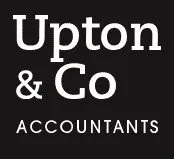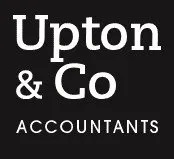What’s the difference between an error and an adjustment?
Your business must disclose errors to HMRC above certain limits in writing. But it can include accounting “adjustments” on the next return. What are the main adjustments (that aren’t errors) that your business could make?

Error correction limits
If you have made errors on previous returns where the net amount owed (or owing) is less than £10,000, you can correct them on your next return. You can also include them on the return if the net tax is between £10,000 and £50,000 and is also less than 1% of the Box 6 outputs figure on the return where you are making the correction. However, all errors outside of these limits must be separately disclosed to HMRC on Form VAT652.
It is sensible to submit Form VAT652 online because HMRC’s system gives useful tips about how to complete it. You will also get an online submission reference to confirm it has been received.
Adjustment 1: Bad debt relief
If you have accounted for output tax on an earlier return, in relation to sales invoices you have issued, you can reclaim it from HMRC if the invoice subsequently turns into a bad debt. The invoice must be more than six months overdue for payment and also written off in your accounts, i.e. the customer’s sales ledger account has been credited and a bad debt expense account created.
If there is no due payment date shown on the invoice, the date you issued the invoice is relevant instead. You can only claim bad debt relief if an invoice is less than four years and six months old from either the invoice or due payment date, whichever is later. It makes sense to regularly review your aged debtors report.
Adjustment 2: Partial exemption
If your business is partially exempt, in other words, you have both taxable and exempt sales, you must make an annual adjustment calculation each year. If you use the standard method, this is based on the ratio of your taxable and exempt income. You could also use a special method agreed with HMRC that uses any other method, e.g. square footage splits. The annual adjustment can produce both under and overpayments, depending on the numbers, and the annual calculation always supersedes the input tax claimed in the four quarters that make up your tax year.
A partial exemption tax year ends on 31 March, 30 April or 31 May, depending on your periods, or 31 March if you submit monthly returns. You can include the adjustment on the return at the end of the year or the following one, it’s your choice.
Adjustment 3: Retail schemes
If you are a retailer and sell goods or services at more than one rate of VAT, you must adopt a retail scheme to work out how much tax you owe each period. In most cases, this will be a “point of sale” scheme, whereby the VAT is calculated on each sale by using a computerised or multi-buttoned till. However, there are two alternative schemes that you could use and which require an annual adjustment at the end of each tax year:
- apportionment scheme 1; or
- direct calculation scheme 2.
You can only use the apportionment scheme if your turnover is less than £1 million.
Related Topics
-
Save tax with pedal power
With summer on the way some of your workers have asked whether you would consider starting a cycle-to-work scheme. Is there a simple way to set one up?
-
What do the main parties intend to do with tax?
With three weeks to go until the election, the main parties have been making tax-related promises. What do we know so far?
-
Disincorporation - is it worth it?
Your business has suffered a dip in the last couple of years and you’re looking to downsize. As part of the process you want to close your company and operate as a sole trader instead. What are the tax consequences?




 This website uses both its own and third-party cookies to analyze our services and navigation on our website in order to improve its contents (analytical purposes: measure visits and sources of web traffic). The legal basis is the consent of the user, except in the case of basic cookies, which are essential to navigate this website.
This website uses both its own and third-party cookies to analyze our services and navigation on our website in order to improve its contents (analytical purposes: measure visits and sources of web traffic). The legal basis is the consent of the user, except in the case of basic cookies, which are essential to navigate this website.